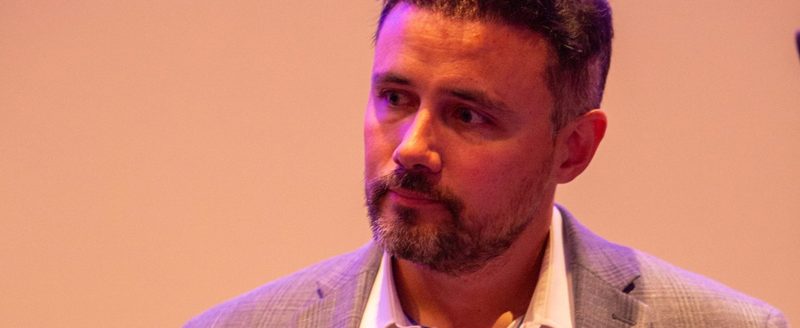KWA strategic implementation planning sessions wrap up, virtual option open until Nov. 8

In late January, Gov. Laura Kelly tasked the Kansas Water Authority to come up with a strategic implementation plan to help save the state’s water. Kelly wanted the plan to include funding based on five guiding principles of the Kansas Water Plan: aquifers, reservoirs, improving water quality, resiliency to extreme weather and awareness/education.
According to the Kansas Water Office, Kelly’s request included initial recommendations for a large-scale, long-term investment framework before the 2025 legislative session. These recommendations should include policy changes, ways to improve state capacity and water management, measurable goals and timelines and include input from various state and local stakeholders.
Two rounds of local consult meetings were held in 2024, one set in June and another in September. These meetings gave stakeholders an opportunity to discuss implementation of the Kansas Water Plan. Currently a virtual, on-demand meeting is open and is intended to give online users a similar experience to those who attended the in-person meetings held in September. Click https://burnsmcd.mysocialpinpoint.com/kansas-water-planning/home to begin. Responses must be submitted before Nov. 8.
Dodge City fall meeting
At the round 2 meeting in Dodge City in mid-September, Earl Lewis, chief engineer for the Kansas Department of Agriculture, Division of Water Resources, said this process is ongoing and time-consuming.
The water plan is divided up into a couple of different areas, and the one most talked about is conserving the life of the High Plains, the Ogallala Aquifer. Reservoirs and improving water quality were also in the conversation.
“We’ve also got guiding principle resiliency in extreme events and research and education,” he said.
The goal of the meeting sessions is to have a “really good, strategic, well thought out, structured funding plan that’s long term,” Lewis said. Stakeholders are the ones holding all the cards.
“You’re really the critical key piece for us here today to get your feedback as we go and develop the agencies with the legislature, with the governor, to say, how are we going to improve the situation?” he said. “What are the funding needs? What are the projects that we want to do? How do we pick those projects? Who picks them? What kind of criteria do we use? How do we measure our success?”
Former secretary for the Kansas Department of Transportation Julie Lorenz helped facilitate the Dodge City meeting and said she’s not a water expert, but she does know how to have those hard conversations and how to start thinking about how to make investments and track them to make sure taxpayers are getting their fair shake.
She said between the stakeholder meetings in the summer and the ag webinar, more than 1,000 Kansans were heard.
“And we heard things that wouldn’t surprise you, like, ‘Hey, let’s take action. Let’s make sure that we have long-term funding, and let’s make sure we have local input,’ ” she said.
Now the focus should turn to refining programs with cost estimates and strategies that can garner public support, she said.
Kansas has more than 50 water programs, and many see a “sharp impending water crisis,” she said, that’s getting closer and closer. All the parties, stakeholders, agencies and communities have to make a commitment to improve long-term viability of water resources.
Lorenz was surprised during the June meetings when she heard comments from people recognizing aquifer decline, but others didn’t realize there were reservoir problems in the state, Lorenz said. That perception is changing, and all Kansans recognize the state has a water problem regardless of where they live.
The different problems have different solutions, and all have a different price tag, she said. But Kansas is one state, and for Lorenz the solution needs to be bold and practical at the same time.
“We’re Kansans. We can do both at the same time, but it’s going to take all of us working together,” she said.
From the breakout groups at the September meeting, each shared representative comments from the various groups.
“We heard stakeholder input is critical to developing a resilient plan. We think stakeholder input is important because they understand each of the individual components, the key components of putting the plan together,” she said.
One comment from Colby said the conversation about having enough water for 50 years is not long enough, and communities need assurance for more than 50 years.
Without water it will be hard to create and develop new businesses, she said.
Lorenz also heard from representatives who said they would be willing to pay a fee if it protects their water supply. She also heard through a range of conversations when water applies to communities in Kansas, the definition isn’t just exclusive to municipalities.
“It’s also not like this one well will have to produce water for the next 50 years, but it’s more like this idea of a community of Kansans,” she said. “It might be a region, it might be a specific town, but it’s a shared responsibility, it’s a shared resource.”
Lewis agreed, adding it’s more about trying to get people to talk across communities.
“Maybe talking to your leaders, with the city administrators, both folks and everybody in the area to say, ‘What do we want from this area, from this region, for this community? And how long do I have water for? And how are we going to achieve that?’ That’s what we want to talk about from that 50-year standpoint,” he said.
No one wants to run out of water in 50 years, but the conversations need to start happening now, he said.
“Keep engaged, and keep talking to your neighbors, whether they do the same thing as you do or not,” Lewis said. “It’s going to be an ongoing process for a long time.”
Kylene Scott can be reached at 620-227-1804 or [email protected].



